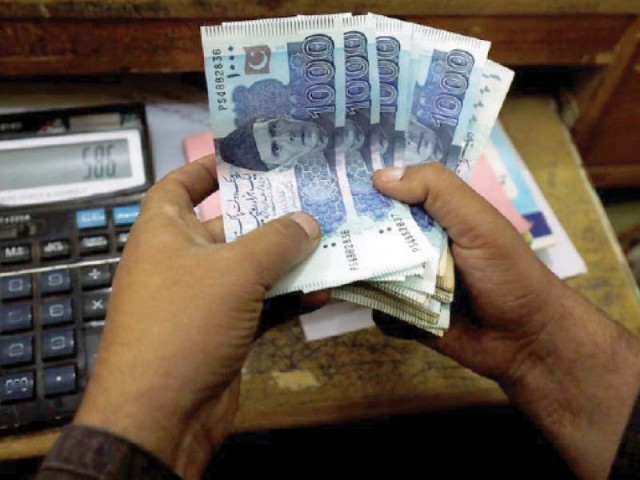Rupee stability brings early optimism
However, broader population is yet to feel relief, regain purchasing power

In the span of slightly over nine months, the rupee ventured into uncharted territory, breaching Rs280/$ in the interbank market on March 3, 2023.
Since then, the economic landscape has been a roller coaster, marked by the familiar refrains of “IMF (International Monetary Fund) is coming,” “fair value of rupee is 250,” “elections will be delayed,” and “Pakistan will default.”
Notably, the rupee also touched Rs307 and Rs325/$ on August 30, ushering in real fears about the normalisation of various financial variables. Despite this financial turbulence, the broader population is yet to feel the relief. With a depreciation exceeding 50% in a year, it would take 2-3 years of the current “stability” for the masses to regain their purchasing power.
The salaried class, often receiving single-digit or early teen post-tax increments, lags behind in the race to enhance real incomes. The economic contraction, fuelled by a tight fiscal policy, high energy prices, abnormal interest rates, and low investment, has expanded the unemployment pool, casting a shadow over the public mood.
However, amidst the prevailing doom and gloom, there are glimmers of initial optimism. International oil prices have been on a relentless decline, a consequence of the global economic slowdown following a rapid increase in global interest rates.
Demand is moderating, while fuel displacement gains momentum. Although oil prices are decelerating, oil remains a crucial factor in the global economy and Pakistan’s growth aspirations, constituting around 30-35% of the country’s imports.
Surprisingly, OPEC+ de facto leaders – MBS and Putin – have shown reluctance to take substantial action to reverse the trend. With a considerable loss in market share, prices are anticipated to drop further to $55-65, necessitating a stronger cut, possibly the last one in concert.
The market is poised to be driven by efficient drillers rather than traditional cartels. Countries like Saudi Arabia, UAE, and Russia are unlikely to permit the US and others to dominate indefinitely, especially as their economies diversify.
Read Rupee gets support from rise in forex reserves
In addition to these external factors, the caretaker government has demonstrated a rapid pace in executing initiatives. The swift completion of the IMF review, the judicious implementation of gas price hikes, a tight monetary policy, crackdowns on smuggling, and legislative reforms on the privatisation agenda have contributed to a clear vision of economic prosperity.
Notably, visits to Arab countries, including two significant Saudi investors – Aramco and Saudi Wafi – buying stakes in Pakistan’s oil marketing companies, signal increased domestic attractiveness, hinting at more positive developments. Moving forward, it is crucial to complement these positive efforts with robust reforms to enhance efficiency.
Once the electoral handover is complete, priorities should include increasing direct taxes, encouraging foreign investment, removing trade barriers, ending smuggling and under-invoicing, facilitating the private sector handover of state-owned enterprises (SOEs), especially the power distribution companies (DISCOs), and boosting IT and other exports by 30 and 20% annually. Period!
To strengthen federal fiscal health, transferring responsibilities like the Benazir Income Support Programme (BISP), agri-tube well subsidy, HEC, provincial PSDP, and DISCOs’ loss back to provinces is imperative.
Allowing provinces to manage their affairs, raise taxes on agriculture, retail, and property according to their needs, and spending on their people aligns with a more decentralised approach.
The federal government’s role should shift towards policymaking, legislation, coordination, and representing a Pakistan that is open and conducive to business. Achieving this requires recognising the potential of the domestic 250 million people as clients or employees, addressing the neglected segment of Pakistan’s youth in education and health, and redirecting efforts towards “Awaam ka Pakistan,” not “Ameer ka Pakistan”.
THE WRITER IS AN INDEPENDENT ECONOMIC ANALYST
Published in The Express Tribune, December 18th, 2023.
Like Business on Facebook, follow @TribuneBiz on Twitter to stay informed and join in the conversation.



















COMMENTS
Comments are moderated and generally will be posted if they are on-topic and not abusive.
For more information, please see our Comments FAQ